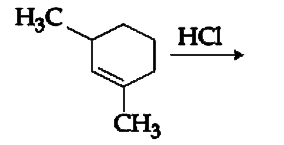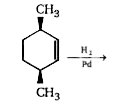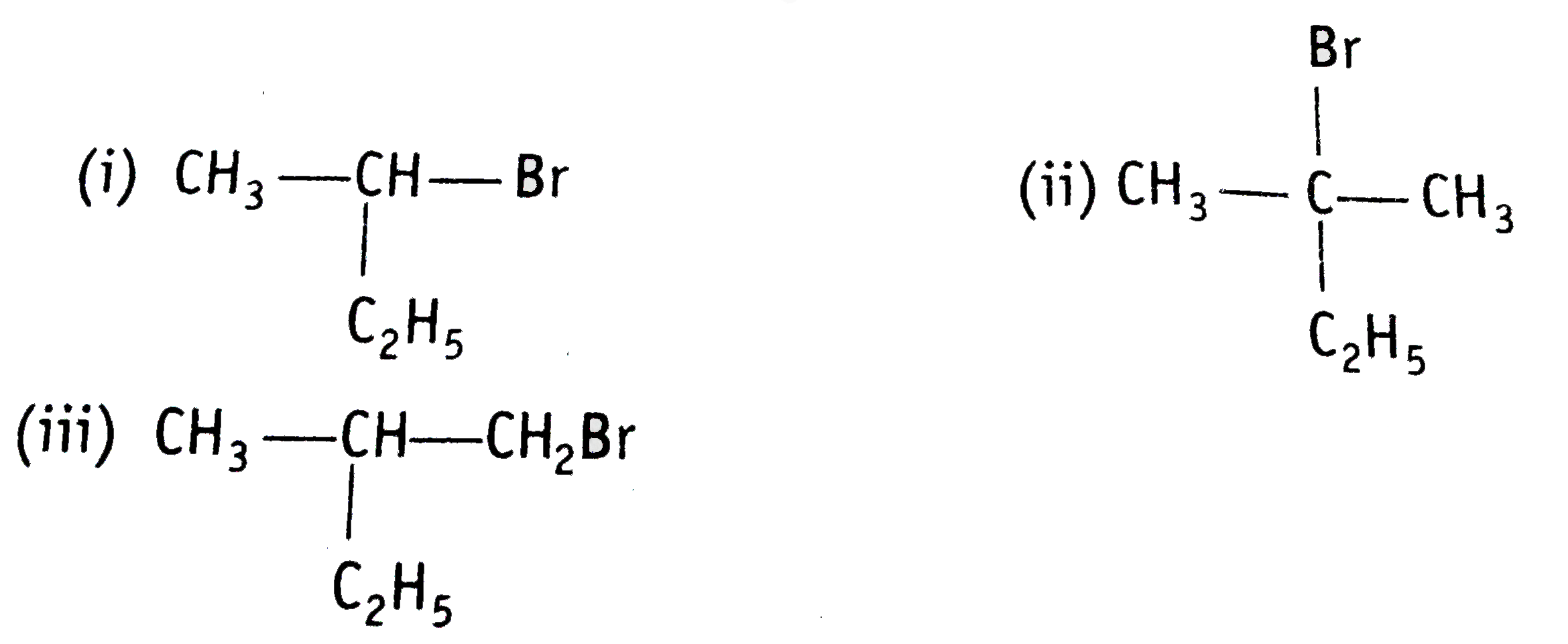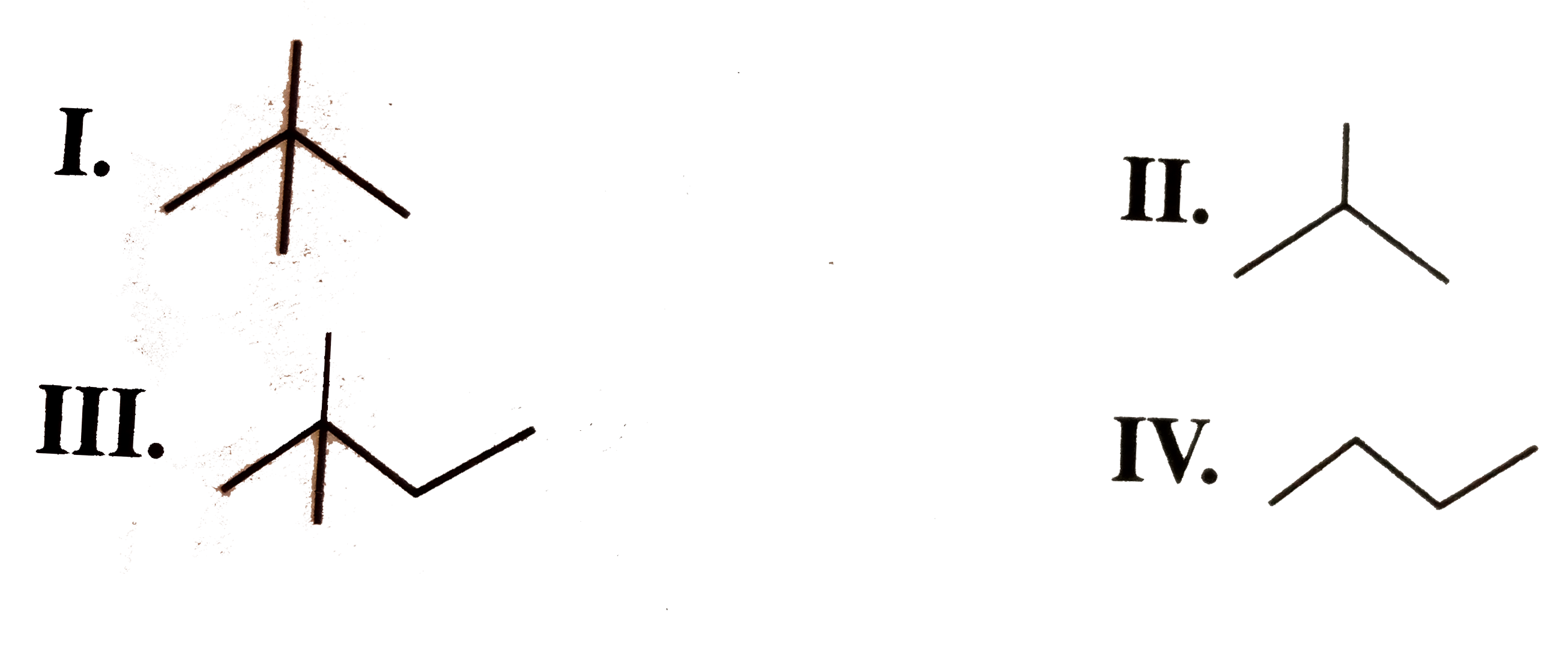Which of the following reaction will not form racemic mixture as product?

CH3CH2CH=CH2HBr−−→
CH3−O∣∣CCH2CH3HCN−−→
CH3−CH3∣C∣H−CH=CH2HCl
To determine which of the given reactions will not form a racemic mixture, we need to analyze each reaction step by step.
Step 1: Analyze Reaction 1
- Reaction: Cyclohexene with HCl
- Mechanism: This is an electrophilic addition reaction. The H+ from HCl adds to the carbon with fewer hydrogens (Markovnikov's rule), forming a carbocation. The Cl- then attacks the carbocation.
- Product: The product has two methyl groups and a Cl attached to the cyclohexene.
- Chirality: Initially, there is one chiral center due to the two methyl groups. The addition of Cl does not create a new chiral center; hence, the product is not a racemic mixture but rather diastereomers.
Step 2: Analyze Reaction 2
- Reaction: CH3-CH2-CH=CH2 with HBr
- Mechanism: This is also an electrophilic addition reaction. H+ adds to the carbon with fewer hydrogens, leading to the formation of a new chiral center.
- Product: The product is CH3-CHBr-CH2-CH3, which has a chiral center.
- Chirality: Since a new chiral center is formed, this product will form a racemic mixture.
Step 3: Analyze Reaction 3
- Reaction: CH3CO-CH2-CH3 with HCN
- Mechanism: This is a nucleophilic addition reaction where CN- attacks the carbonyl carbon.
- Product: The product is CH3-COH-CN-CH2-CH3, which has a new chiral center.
- Chirality: A new chiral center is formed, leading to a racemic mixture.
Step 4: Analyze Reaction 4
- Reaction: CH3-CH=CH-CH2 with HCl
- Mechanism: The reaction involves carbocation formation and hydride shift to form a more stable carbocation.
- Product: The final product is CH3-CH(Cl)-CH2-CH3.
- Chirality: No new chiral center is formed in the product, thus it does not lead to a racemic mixture.
Conclusion
From the analysis:
- Reaction 1: Does not form a racemic mixture (produces diastereomers).
- Reaction 2: Forms a racemic mixture.
- Reaction 3: Forms a racemic mixture.
- Reaction 4: Does not form a racemic mixture.
Final Answer: The reactions that do not form a racemic mixture are Option 1 and Option 4.
- Reaction: Cyclohexene with HCl
- Mechanism: This is an electrophilic addition reaction. The H+ from HCl adds to the carbon with fewer hydrogens (Markovnikov's rule), forming a carbocation. The Cl- then attacks the carbocation.
- Product: The product has two methyl groups and a Cl attached to the cyclohexene.
- Chirality: Initially, there is one chiral center due to the two methyl groups. The addition of Cl does not create a new chiral center; hence, the product is not a racemic mixture but rather diastereomers.
- Reaction: CH3-CH2-CH=CH2 with HBr
- Mechanism: This is also an electrophilic addition reaction. H+ adds to the carbon with fewer hydrogens, leading to the formation of a new chiral center.
- Product: The product is CH3-CHBr-CH2-CH3, which has a chiral center.
- Chirality: Since a new chiral center is formed, this product will form a racemic mixture.
- Reaction: CH3CO-CH2-CH3 with HCN
- Mechanism: This is a nucleophilic addition reaction where CN- attacks the carbonyl carbon.
- Product: The product is CH3-COH-CN-CH2-CH3, which has a new chiral center.
- Chirality: A new chiral center is formed, leading to a racemic mixture.
- Reaction: CH3-CH=CH-CH2 with HCl
- Mechanism: The reaction involves carbocation formation and hydride shift to form a more stable carbocation.
- Product: The final product is CH3-CH(Cl)-CH2-CH3.
- Chirality: No new chiral center is formed in the product, thus it does not lead to a racemic mixture.
From the analysis:
- Reaction 1: Does not form a racemic mixture (produces diastereomers).
- Reaction 2: Forms a racemic mixture.
- Reaction 3: Forms a racemic mixture.
- Reaction 4: Does not form a racemic mixture.
Topper's Solved these Questions
Similar Questions
Knowledge Check
Which of the following reaction will give racemic mixture?
A B
B C
C D
D
A racemic mixture is :
Aalways equimolar mixture of a pair of enantiomersBalways equimolar mixture of a pair of diastereomersCalways optically inactiveDalways optically activeProduct of which of the following reactions, is racemic mixture ?
A B
B C
C D
D
Which of the following compounds will give racemic mixture on nucleophillic substitution by OH− ion?

View SolutionIn which fo the following reactions is the correct major product formed?
View SolutionWhich one of the following products would produce a racemic
mixture on monochlorination ?
I.
View SolutionIn which of the following reactions product formed is same ?

View SolutionWhich of the following compounds will give racemic mixture by SN1 reaction?
View Solution
